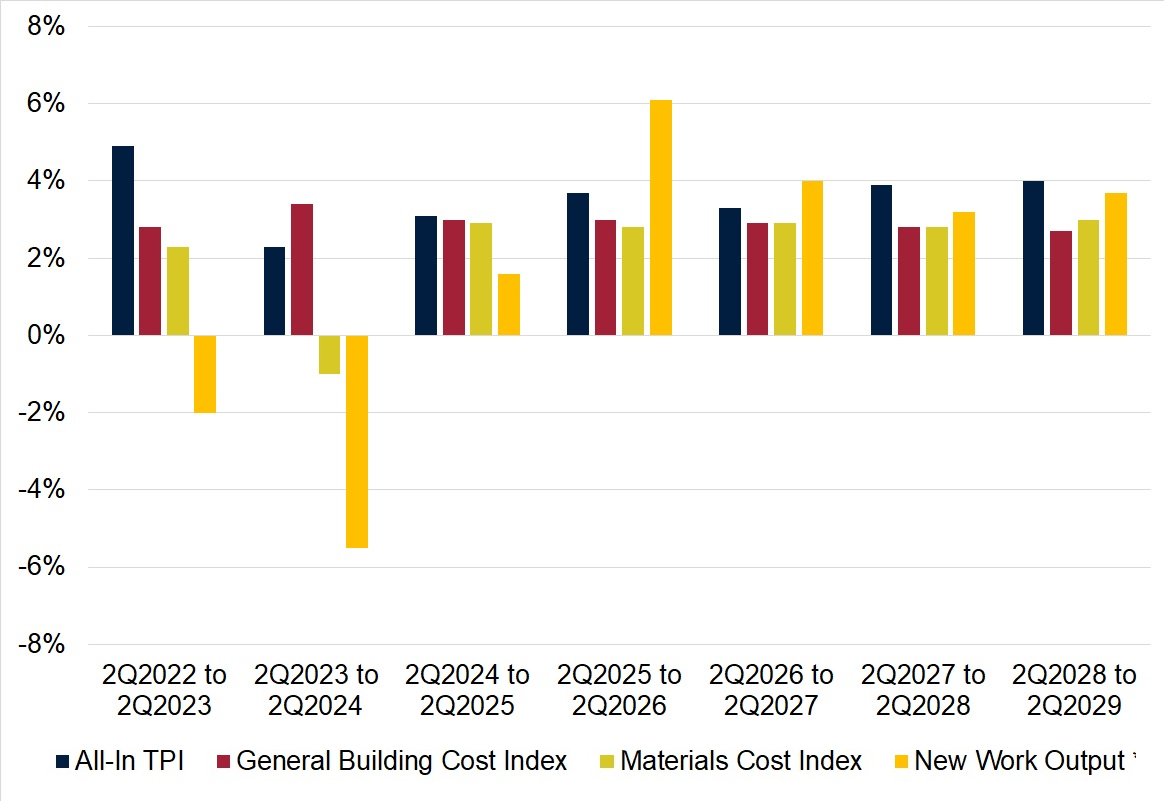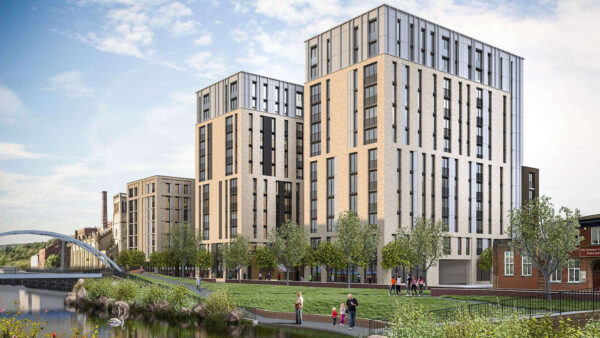Building costs will increase by 15% and tender prices by 19% over the next five years, according to the latest forecast from Building Cost Information Service.
Demand is expected to continue contracting due to decreased output in the housing, private commercial and industrial sectors. Overall output is expected to fall by 5.5% in 2024 compared with last year.
However, growth is expected to return next year with total new work output increasing 20% by the second quarter of 2029.
BCIS reports that contractors are still risk-averse and selective about projects. Annual growth in tender prices is expected to continue to fall.
On input prices, labour is still the main driver. Labour costs are forecast to slow, but increase overall by 17% between the second quarter of 2024 and Q2 2029.
BCIS five-year construction industry forecast

BCIS chief economist Dr David Crosthwaite said: “As long as the cost of borrowing remains elevated, construction output is likely to suffer continuing declines.
“This is especially the case in the private sector, because it’s a major barrier to investment. We’ve also seen the pipeline for new orders affected by the stagnant economy.
“However, with strong cross-sector wage growth, albeit to a lesser extent in construction, any expectations that we’ll see the first cut to the base rate this month have largely fallen away, and we’re now looking at August as the earliest date.”
Crosthwaite added that construction activity will be influenced by the outcome of the general election and future spending plans, though all parties have pledged to increase housebuilding.
Labour costs
He added: “The upside risk to labour costs is that wages are driven up by widely reported skills shortages, which could impact on the viability and affordability of projects.
“The workforce is 90% what it was before the pandemic, when there were already longstanding concerns about fulfilling skill requirements.
“With materials, there remains an ongoing risk to price inflation due to uncertainty around disruption to trade routes in the Red Sea and conflict in the Middle East and Ukraine.”











